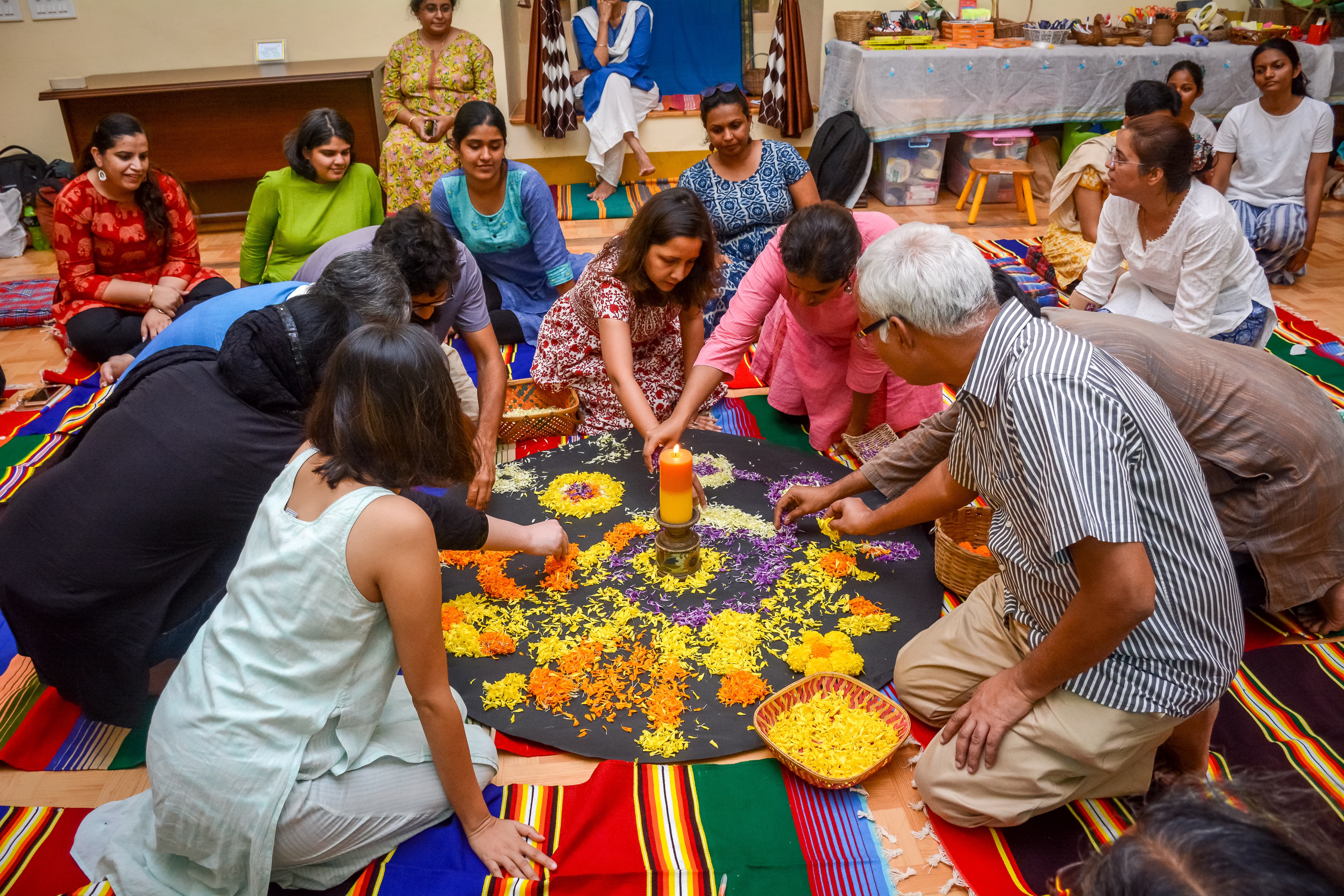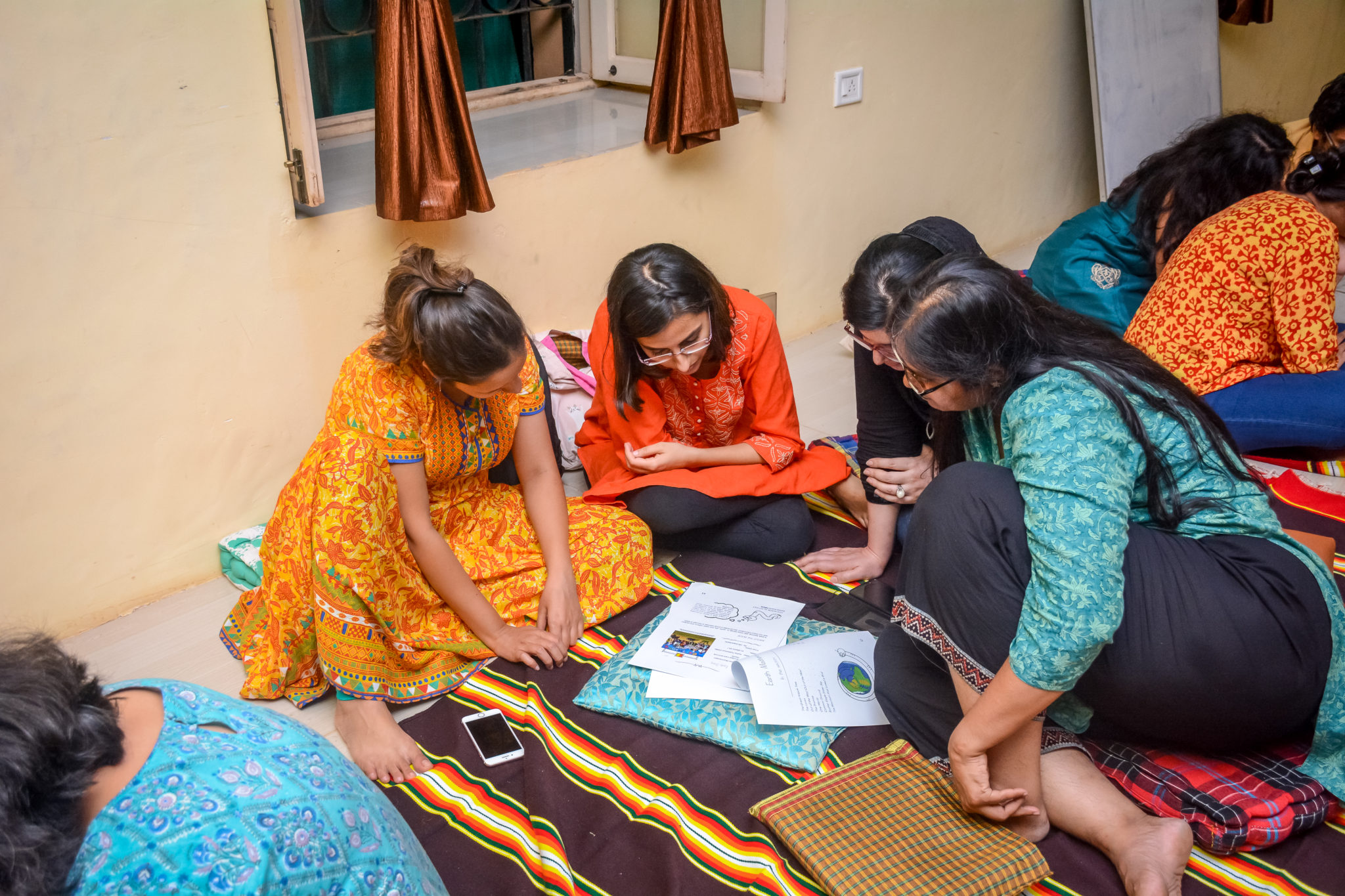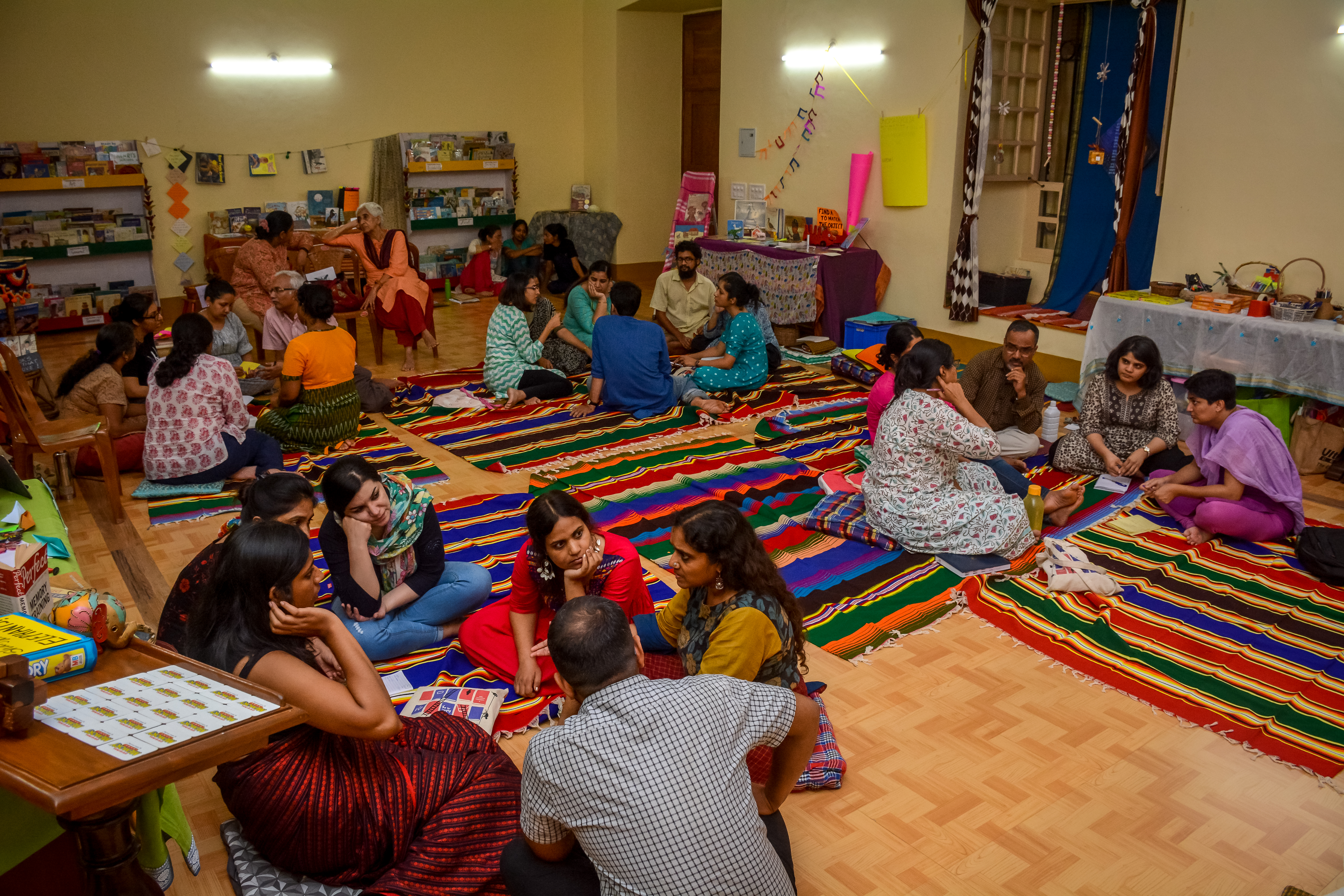Written by Radhika Timbadia, LEC 2018
I was intrigued when I came across an email about the Library Educator’s Course earlier this year. I wondered what it would entail. I was at a point in my life where I was winding down other work and beginning to think about opening a bookstore. I was very taken with the idea of the space being sustainable and accessible and so I also wanted it to have a library. Clearly this course sounded exciting – but what was it?
The 7-month course was divided into three contact periods in Goa interspersed with structured and active distance periods. There was a very sophisticated online system to do our readings, discuss articles and figure out assignments (my friends tell me this is the norm with distance education courses nowadays, I’m so easily impressed!). One of the first documents we read was about the nomenclature of the course, and to be honest I’m not sure I entirely understood it then. But I do now, in my own way.
The first contact period in April 2018, plunged me into a reflective mood trying to recollect my own journey as a reader. To my absolute delight I found it to be unusual, convoluted and very much still evolving. I started to explore the role and need for libraries in our society – intuitively, for emotional reasons but also with evidence and logic. As soon as I got back from Goa I made it my mission to understand the role of libraries in my friends’ lives and their journeys as readers, and I kept coming back to an individual or a relationship that influenced people in magical ways to help them become readers. The interested parent, aunt, cousin, helpful librarian, kind teacher, old man in a bookshop and so on – the individual matters and that I think, along with a good collection of books, makes a reader/library.
There are many things I found unique about this course – the thoroughness of the content, the incredible energy of the contact days that carried us through the distance periods, the mentorship programme, and my amazing classmates.
The resource people on the course took their life’s experiences in the field with children and books and distilled them to find the most important ones. When you are working with children to make them readers what matters the most? Does it matter more whether your collection is meticulously arranged, safe and locked in a cupboard or that it is well-curated, accessible and made exciting for children? The whole course felt like it was about simple and yet profound truths. But, of course we weren’t there to just take their word for it. We read widely from books, articles and academic journals to reflect, form our own opinions and came to our own truths.
 The topics ranged from the need and role of libraries (even during war); to understanding what we do and why we do it and building our own vision; to understanding the political, legal and social history of libraries in India. We went further in trying to understand how a child begins to read, different expressions and experiences stemming from childhood memories of reading. One of my favourite topics was different ways in which we can engage with children’s literature – the need for diversity and the complexities of the Indian context, the role of non-fiction and ways to curate our own collections. We even discussed what makes a vibrant library – from the physical aspects, to different ways in which to engage children and forms of assessment. Phew, sounds exhaustive, doesn’t it? And I’ve just glossed over the larger topics. It felt like a thorough and thoughtful introduction that has left me with many questions and avenues I want to keep exploring.
The topics ranged from the need and role of libraries (even during war); to understanding what we do and why we do it and building our own vision; to understanding the political, legal and social history of libraries in India. We went further in trying to understand how a child begins to read, different expressions and experiences stemming from childhood memories of reading. One of my favourite topics was different ways in which we can engage with children’s literature – the need for diversity and the complexities of the Indian context, the role of non-fiction and ways to curate our own collections. We even discussed what makes a vibrant library – from the physical aspects, to different ways in which to engage children and forms of assessment. Phew, sounds exhaustive, doesn’t it? And I’ve just glossed over the larger topics. It felt like a thorough and thoughtful introduction that has left me with many questions and avenues I want to keep exploring.
There wasn’t a single dull moment, we explored and experienced every topic mentioned above, we did not just observe and we were not lectured. Want to explore how poetry could be opened up for children? We read, felt, wrote and discussed poetry. Want to use art in your library? We created our own art through a guided visualisation exercise. While participating in these activities we became aware of their strengths, the feelings that they inspire and how best we could adapt them to our circumstances. From the colourful, thoughtful displays of books on various themes, the collection of fabulous books available to us, to the way each day was structured brought out the team’s amazing eye for detail and sensitivity to the participants.
And last, but not least by any measure were the people we met and the relationships we began. This brings me back full circle to what I have learned to value most – the individual and the relationship. My classmates came from many different parts of India (and even Afghanistan), where they worked in very different circumstances. I was humbled to hear their stories and share mine – public library, school library, alternative schools, farm schools, NGOs, trusts, entrepreneurs, funders; the list goes on. We are all united by our will and courage to want to provide safe, beautiful, imaginative spaces for children (and adults) to become readers. The programme supported us through our self-doubts during field projects and assignments through a system of encouraging, practical and assertive mentors. It is going to take me some time to absorb everything I learned, I continue to chew on it and feel comfortable and fuzzy that this community exists, and that I’m a part of it.

The seed implanted in contact points at GOA is flourishing through out INDIA and abroad now. Your experience and expression is one of those beautiful flower.